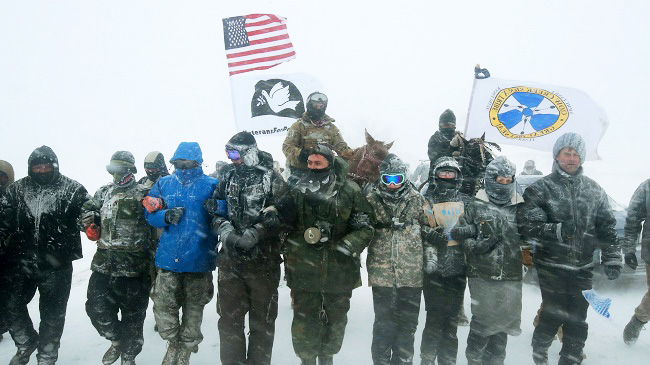
In the midst of the White House’s decision to halt construction on the controversial Dakota Access Pipeline, which the pipeline’s owners have vowed to ignore, an environmental crisis is unfolding in North Dakota, not too far away from the Standing Rock camp.
According to CNBC, another crude oil pipeline some two and a half hours away from the Standing Rock protest site in Cannon Ball has spilled a significant amount of crude oil into the surrounding area. To make matters worse, electronic sensors deployed in the area to help prevent such leaks somehow malfunctioned, which allowed such a huge leak to occur without detection.
While the spill hasn’t affected the Standing Rock protest site or the Dakota Access Pipeline directly, the amount spilled and the close proximity of the two locations cannot be ignored:
North Dakota officials estimate more than 176,000 gallons of crude oil leaked from the Belle Fourche Pipeline into the Ash Coulee Creek. State environmental scientist Bill Suess says a landowner discovered the spill on Dec. 5 near the city of Belfield, which is roughly 150 miles from the epicenter of the Dakota Access pipeline protest camps.
Wendy Owen, a spokesperson for the Belle Fourche Pipeline’s operators, told reporters, “The leak was contained within hours of the its discovery.” Owens and others briefed on the matter didn’t offer an explanation for why the electronic sensors malfunction and allowed so much crude oil to leak into the creek. However, she did say that the hillside the pipeline was buried into had “sloughed” — suggesting the piping may have burst because of the shift. “We have several working theories and the investigation is ongoing,” she concluded.
Suess noted the spill spread at least six miles downstream, “[fouling] an unknown amount of private and U.S. Forest Service land along the waterway.” Since the leak’s discovery, however, Ash Coulee Creek has frozen over — thereby stopping the 176,000 gallons of crude oil in its tracks. Which is perhaps the luckiest thing about this whole mess as the creek feeds into the Little Missouri River, though Suess stressed there was no evidence anything had made it that far.
(Via CNBC)
